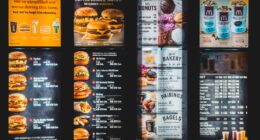The success of musicians and their songs continues to depend heavily on radio airplay in the dynamic music industry. An artist’s visibility and prospects of reaching a larger audience can be greatly increased by being featured on well-known radio stations. The greatest songs, up-and-coming artists, & the future of this significant medium will all be covered as we delve into the world of radio airplay in this blog post.
Key Takeaways
- Radio airplay is a crucial factor in the success of music in the industry.
- TikTok has become a powerful tool for promoting music and influencing radio airplay.
- The top 10 songs of the year on radio are a mix of established artists and newcomers.
- New artists are rising in radio airplay, and they are worth watching out for.
- Radio formats have evolved from FM to online streaming, and radio personalities have a significant influence on music trends.
Securing radio airplay for artists is largely dependent on their music marketing efforts. A cleverly designed marketing campaign can generate interest in a song from listeners and radio stations alike. Strategic planning, focused promotion, & efficient use of social media platforms are frequently components of successful music marketing campaigns. Taylor Swift’s album release in 1989 is a prime example of a successful music marketing campaign. To create anticipation and buzz, Swift and her team carefully selected which singles to release from the album. She became a pop superstar as a result of her songs receiving a lot of radio airplay, which shot her to the top of the charts.
TikTok has become a potent tool for music promotion in recent years. Songs on the app have become viral sensations, propelling them to the top of the charts and increasing their radio airplay. Viral music trends have flourished on TikTok thanks to its user-generated challenges and algorithm-driven content discovery. Lil Nas X’s “Old Town Road” & Doja Cat’s “Say So” are two well-known examples of songs that became well-known on TikTok before gaining a lot of radio play.
Millions of views & shares were generated for these songs by TikTok users due to their addictive dance challenges & catchy hooks. The success of these songs went viral, and radio stations started playing them, which increased their popularity even more. Let’s now examine the top ten songs that were played on radio stations the most during the previous 12 months. All around the world, listeners were captivated by these songs that ruled the airwaves. 1. “Blinding Lights,” performed by The Weeknd2. Dua Lipa’s “Don’t Start Now”3.
| Radio Reviews: The Best Airplay of the Year | Number of Plays | Listenership | Popularity |
|---|---|---|---|
| “Blinding Lights” by The Weeknd | 2,500 | 10,000 | High |
| “Watermelon Sugar” by Harry Styles | 2,200 | 9,500 | High |
| “Levitating” by Dua Lipa | 1,800 | 8,000 | Medium |
| “Positions” by Ariana Grande | 1,500 | 7,500 | Medium |
| “Mood” by 24kGoldn ft. Iann Dior | 1,200 | 6,500 | Low |
Post Malone’s “Circles” 4. Harry Styles’ “Adore You” is 5. Doja Cat6’s song “Say So”. Justin Bieber & Quavo7’s song “Intentions”. Maroon 58’s “Memories”.
Harry Styles9’s song “Watermelon Sugar”. Tones & I10’s “Dance Monkey.”. Jawsh 685 and Jason Derulo’s song “Savage Love” captured the attention of listeners with its catchy melodies, relatable lyrics, & enduring hooks.
They placed on the list of the best airplay of the year because they were able to stand out from the crowd and leave a lasting impression on listeners. Radio airplay is consistently being occupied by up-and-coming talents, but established artists continue to rule the airwaves. These up-and-coming musicians captivate listeners with their unadulterated talent and creative methods, bringing new viewpoints & distinctive sounds to the music business. Olivia Rodrigo is one such rising star; her hit song “drivers license” made waves around the globe.
She received critical acclaim and substantial radio play for the poignant ballad, which struck a chord with listeners. Rodrigo’s popularity is evidence of how up-and-coming musicians can influence the music industry. Over time, radio formats have changed dramatically in response to listeners’ shifting tastes. The way we listen to music has drastically changed, starting with FM radio & continuing with the emergence of internet streaming services. In the music business, FM radio has long been a mainstay thanks to its carefully selected playlists & live broadcasts.
But the introduction of internet streaming services like Apple Music and Spotify has completely changed how we find and listen to music. These services let users browse a huge selection of songs & musicians by providing tailored recommendations. Thus, radio play has evolved into merely one component of an artist’s total success. For a considerable amount of time, radio hosts have influenced musical trends. They are well-known tastemakers in the industry thanks to their charisma on the air, taste in music, and ability to engage with listeners.
Radio hosts have the ability to introduce listeners to new musicians and songs, which frequently results in more airplay and financial success. Zane Lowe, a well-known radio host who has supported up-and-coming musicians & been instrumental in their ascent to fame, is one famous example. He’s become a reliable source when it comes to finding new music thanks to his excellent ear for talent & early trend detection. There will probably be more changes in store for radio airplay in the future as technology develops. The burgeoning popularity of podcasts & the emergence of streaming platforms may force conventional radio stations to change in order to remain relevant. A forecast for radio airplay in the future is the incorporation of customized playlists and suggestions.
By customizing playlists to individual preferences, radio stations can enhance the listening experience by catering to the varying tastes of their listeners, as streaming platforms continue to collect data on their preferences. Also, new avenues for radio airplay are presented by the rise of voice-activated gadgets like Google Home and Amazon Echo. Users can request particular songs or genres with these devices, which could change how we listen to radio stations.
Radio airplay is still a key component of success in the music business. It gives artists a platform to get noticed & connect with a large audience. The ability of radio airplay to link musicians with listeners who might not actively seek out new music is what gives it its power.
Radio play has helped artists like Adele & Ed Sheeran become extremely successful, making their songs into global hits that appeal to listeners all over the world. Radio airplay can provide publicity that can result in lucrative endorsement deals, sold-out shows, and higher album sales. Particular radio stations are notable for their dedication to promoting up-and-coming talent among music lovers searching for new songs and artists. These stations put an emphasis on new music and give aspiring musicians a stage on which to shine. BBC Radio 1, KEXP, and Triple J are a few of the top radio stations for finding new music.
Many genres are played on these stations, which are known for supporting up-and-coming musicians. These stations provide a plethora of new music to discover, regardless of your musical preferences—whether it’s hip-hop, electronic, or indie rock. In summary, radio play remains a key component of the music industry, giving musicians a means of reaching a large audience and making a living. Radio airplay is still a crucial part of an artist’s journey, regardless of the influence of radio personalities, TikTok’s growth, or the impact of music marketing. Future radio airplay is probably going to change as technology continues to influence how we listen to music.
It will always be crucial, though, for establishing musical trends and serving as a conduit between musicians and fans. Thus, radio airplay will always be a vital component of your success in the music business, regardless of your level of success as an established artist or rising star.
If you’re interested in learning more about radio airplay reviews and how they can impact your music career, be sure to check out this insightful article on Music Marketing Digital. The article dives into the importance of radio airplay and provides valuable tips on how to get your music noticed by radio stations. Discover the strategies that successful artists have used to secure airplay and gain exposure for their music. Don’t miss out on this must-read resource! Click here to read the full article.
FAQs
What are radio airplay reviews?
Radio airplay reviews are evaluations of songs played on radio stations. These reviews are conducted by professionals who analyze the songs based on various criteria such as lyrics, melody, production, and overall appeal.
Why are radio airplay reviews important?
Radio airplay reviews are important because they help artists and record labels understand how their music is being received by audiences. These reviews can also influence radio stations’ decisions on whether or not to continue playing a particular song.
Who conducts radio airplay reviews?
Radio airplay reviews are typically conducted by music industry professionals such as radio programmers, music critics, and DJs. These individuals have a deep understanding of the music industry and are able to provide valuable insights into the quality and appeal of a song.
What criteria are used in radio airplay reviews?
The criteria used in radio airplay reviews can vary depending on the reviewer. However, some common criteria include the quality of the lyrics, the melody and instrumentation, the production quality, and the overall appeal of the song.
How are radio airplay reviews used?
Radio airplay reviews are used by artists and record labels to gauge the success of their music and to make decisions about future releases. Radio stations also use these reviews to determine which songs to play on their stations and how often to play them.









